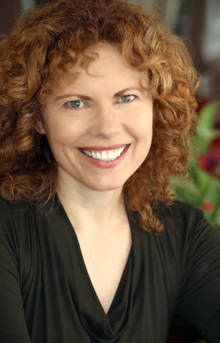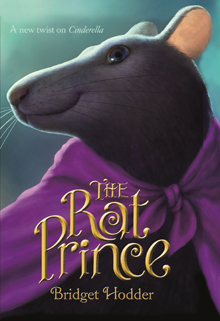Bridget Hodder is the first-time author of
The Rat Prince, a fairytale retelling of Cinderella. Previously an archaeologist, she currently works to help families who struggle with autism. Hodder lives with her family in New England.
You studied European history and archaeology. How did you use your background to create the imaginary world of The Rat Prince?

When you've read a sufficient number of antiquated documents (and apparently, I have) it's easy for your mind to slip its moorings in the present and drift back into the remote past. This certainly helped with
The Rat Prince.
The basic story of is told from two points of view: Cinderella's, and that of Char, who is Prince of the Rats of the Northern Realm. Char doesn't know it yet, but he's in love with Cinderella—who's not as passive and cowardly as she appears. On the night of the big ball, Char's changed into a human footman by the fairy godmother. Together, he and Cinderella turn the legend upside down, bring the wicked stepmother to justice, and save the kingdom from a great threat. Besides finding a truly happy ending!
Because scholarly accuracy is important to me, I decided to set
The Rat Prince in a fantasy kingdom, Angland, rather than in real-life England. This allowed me to weave the settings and customs of wildly different locales and time periods into the story, supercharging the fairytale elements without misrepresenting historical facts. For example, Queen Elizabeth I is glancingly referred to in the book as Queen Lisbeth of Nance...and there's a network of underground sewers in the book that's straight out of the book Les Miserables. (I confess, I haven't seen the play or the movie).
Which character resonates with you the most and why?
There's something irresistible to me about Char, the Prince of the Rats. I admire his wholehearted zest for life, and the sense of humor that coexists with his honor and courage. Heroes don't always have to be serious.
I realized quite late in the game—after I'd already written the acknowledgements for the book—that the character of the Rat Prince had been inspired greatly by Reepicheep, the knightly Talking Mouse from the Chronicles of Narnia. In The Voyage of the Dawn Treader, Reepicheep disappeared over a mysterious wave into the afterlife, never to be seen again. Apparently, I wasn't ready to say goodbye. Thanks, C.S. Lewis.
Tell us about your writing journey. What were you doing previously, and what inspired you to write The Rat Prince?

I started writing stories when I was four years old, and I never stopped. In fact, writing daily was so natural to me, I didn't realize till well into my adulthood that this was a logical career choice I ought to try. It was a bit like the music that plays in the background of a film—always there, echoing the experience of the main character and sometimes influencing it, but going unnoticed.
A Dorothy Sayers character once asked her former Oxford professor a question about how to choose the right path in life and career, "...how is one to know which things are really of overmastering importance?''
''We can only know that,'' said Miss de Vine, ''when they have overmastered us.''
The Rat Prince overmastered me, and turned me into a full-time author. In fact, I always say that writing that book was more like spirit possession than inspiration. I literally heard a voice—Prince Char's voice—telling me to write the true story of Cinderella. It was my own heart, however, that told me to sell the book once it was written. When your heart talks, you'd better listen.
Retellings allow us to subvert the conventions and stereotypes found in some original fairytales. How did you decide which elements of Cinderella to preserve and which elements to make more contemporary?
The elements that bothered me most about the traditional "Cinderella" were my points of departure. Such as the emphasis on looks and wealth. Or the harrowing passivity of the main character. Or how about the utter lack of any actual romance in a tale that's sold to the world over as "romantic"? (Unless you find it romantic when an abused girl marries the richest, most powerful guy she can find without knowing a thing about him.)
There are also some gaping holes in the traditional plot. For example, why on earth would Cinderella's father allow her to be abused by her stepmother like that? Or, why would a handsome crown prince need a ball with all the ladies of the land in attendance in order to find a wife?
And, by the way, how come no one ever asks what happened to the wicked stepmother's first husband?
Don't worry. All these questions have answers, and they're in the book!
As an author and a former reading and language specialist in the public schools, what would you like to let teachers and parents know about your approach to literacy and learning?
In our worthy quest to educate and inform, we sometimes lose sight of the fact that our strongest ally in the fight for literacy is good, gripping storytelling. Books need to entertain and enthrall, or we lose readers before they can learn. And the best learning is the kind that happens without the reader even realizing they're being taught. I try to put that into practice in the books I write. I weave in teachable philosophy, deep thought and compass points of conscience—they're there if you look—but first and foremost, I aim to write a cracking good read!
....Thank you so much for having me!
Alina O'Donnell is the editor of Literacy Daily.